Theorem of Perpendicular Lines to a Line in Space
In space, all lines perpendicular to a line $ r $ that pass through a point $ P \in r $ lie within a single plane, \( \alpha \).
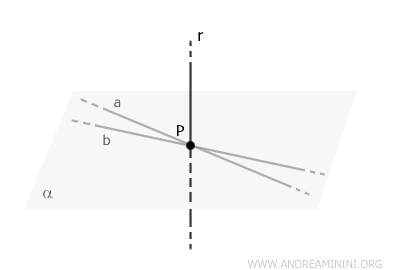
Proof
To demonstrate that all lines perpendicular to \( r \) passing through \( P \) lie in the same plane, I’ll use a proof by contradiction, which will lead to an inconsistency.
Let’s consider two lines, \( a \) and \( b \), both perpendicular to \( r \) and passing through \( P \).
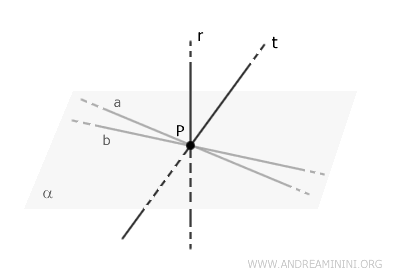
These lines define a plane, which I’ll refer to as \( \alpha \), and this plane is also perpendicular to line $ r $. Therefore, \( \alpha \) contains both \( a \) and \( b \).
Now, assume for the sake of contradiction that there exists another line \( t \), perpendicular to \( r \) and passing through \( P \), which does not lie in plane \( \alpha \).
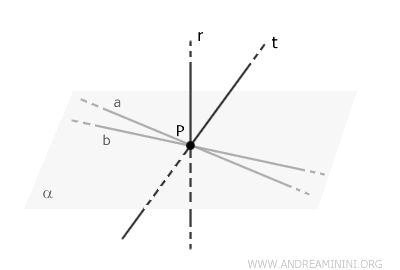
If line \( t \) does not lie in plane \( \alpha \), then there must exist a different plane, \( \beta \), defined by lines \( t \) and \( r \).
Thus, \( \beta \) is the plane containing both \( r \) and \( t \).
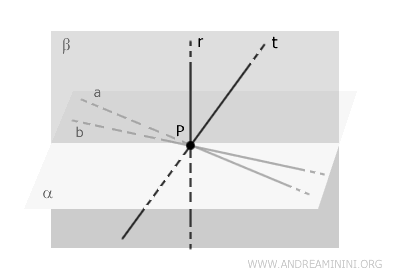
The planes \( \alpha \) and \( \beta \) intersect along a line \( s \), which passes through point \( P \), since both planes contain \( P \).
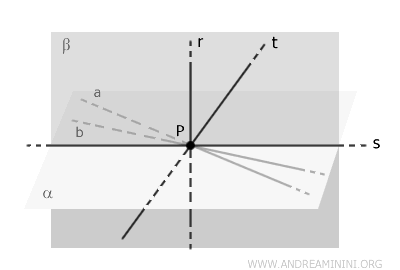
However, this leads to a contradiction.
The line \( s \), as the intersection of planes \( \alpha \) and \( \beta \), belongs to both planes.
Since line \( s \) lies in plane \( \alpha \), which is defined by two lines \( a \) and \( b \) that are perpendicular to \( r \), the theorem of perpendicularity implies that \( s \) is also perpendicular to \( r \).
Now, in plane \( \beta \), there are two lines (\( t \) (by assumption) and \( s \) (by construction)) that are perpendicular to \( r \) and pass through \( P \). But this is impossible, as a line in a single plane can have only one perpendicular passing through a given point.
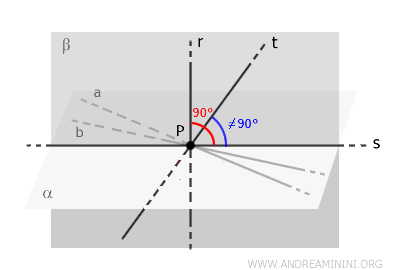
Therefore, within plane \( \beta \), which also contains line \( r \), it is not possible to have two lines perpendicular to \( r \) passing through point \( P \).
Since the assumption that line \( t \) does not lie in plane \( \alpha \) results in a contradiction, we must conclude the opposite: \( t \) must lie in plane \( \alpha \).
This proves that all lines perpendicular to \( r \) and passing through a point \( P \) on \( r \) lie within the same plane, \( \alpha \).
And with that, the theorem is proven.
And so on.
